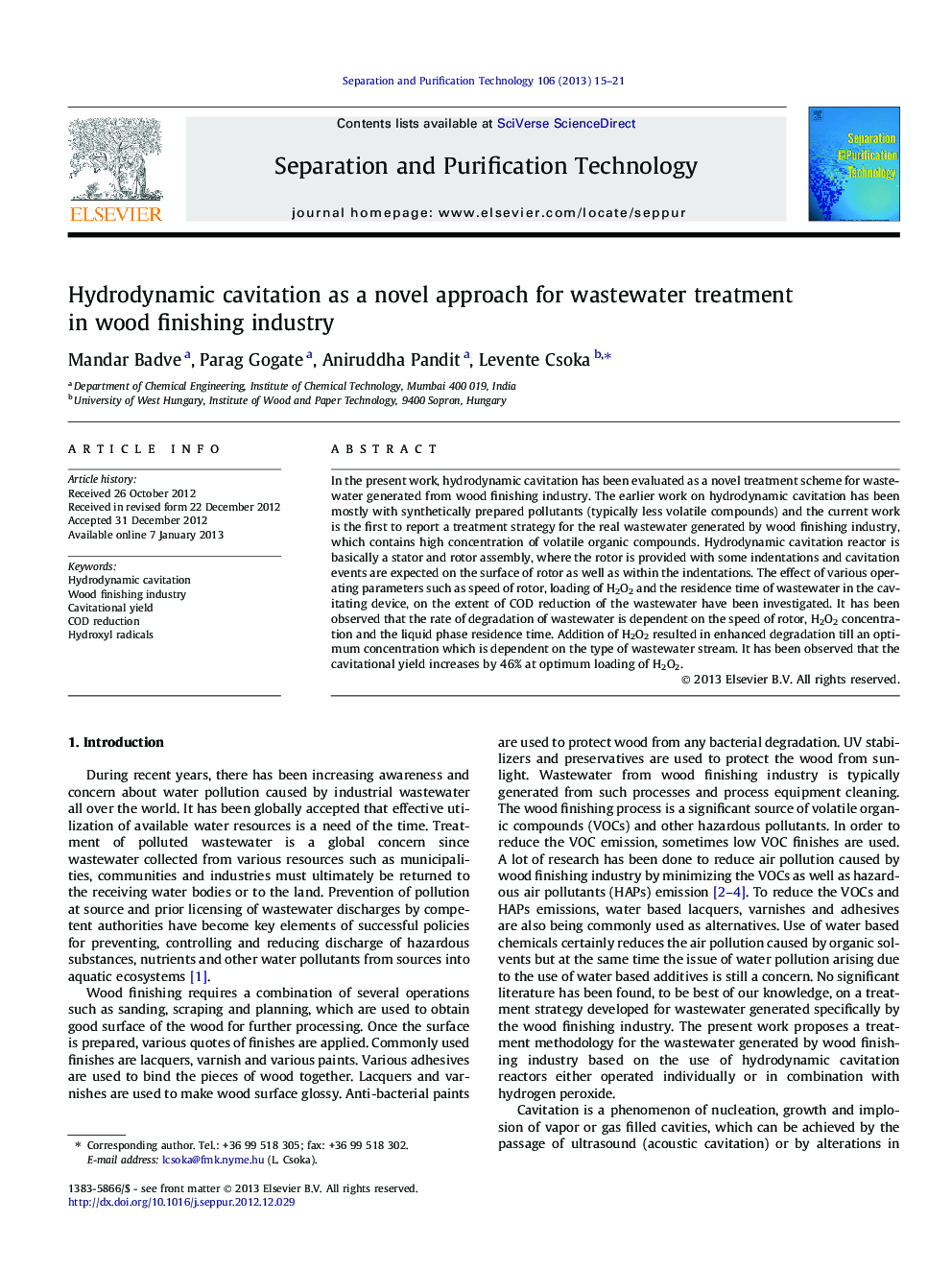| Article ID | Journal | Published Year | Pages | File Type |
|---|---|---|---|---|
| 641732 | Separation and Purification Technology | 2013 | 7 Pages |
In the present work, hydrodynamic cavitation has been evaluated as a novel treatment scheme for wastewater generated from wood finishing industry. The earlier work on hydrodynamic cavitation has been mostly with synthetically prepared pollutants (typically less volatile compounds) and the current work is the first to report a treatment strategy for the real wastewater generated by wood finishing industry, which contains high concentration of volatile organic compounds. Hydrodynamic cavitation reactor is basically a stator and rotor assembly, where the rotor is provided with some indentations and cavitation events are expected on the surface of rotor as well as within the indentations. The effect of various operating parameters such as speed of rotor, loading of H2O2 and the residence time of wastewater in the cavitating device, on the extent of COD reduction of the wastewater have been investigated. It has been observed that the rate of degradation of wastewater is dependent on the speed of rotor, H2O2 concentration and the liquid phase residence time. Addition of H2O2 resulted in enhanced degradation till an optimum concentration which is dependent on the type of wastewater stream. It has been observed that the cavitational yield increases by 46% at optimum loading of H2O2.
► Hydrodynamic cavitation as a effective approach for wastewater treatment. ► First depiction of application to effluent from wood finishing industry. ► Combination with hydrogen peroxide is effective. ► Hydraulic characteristics for cavitation reactor established.
